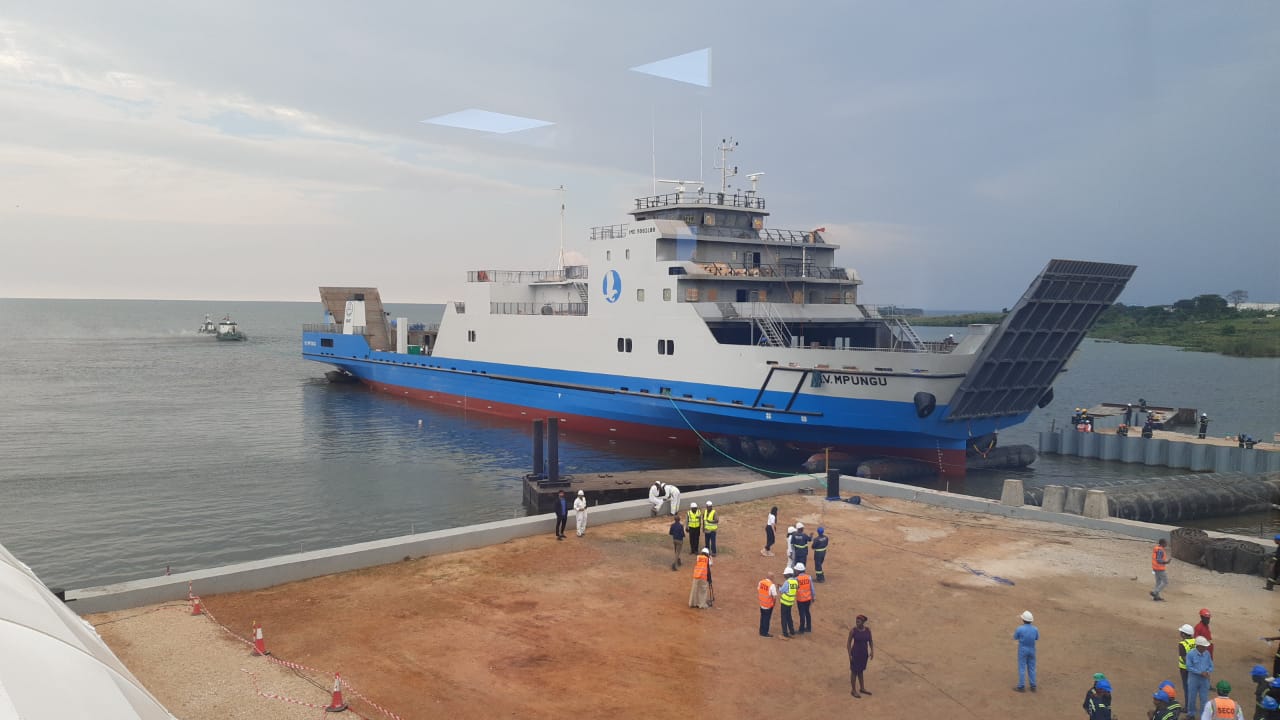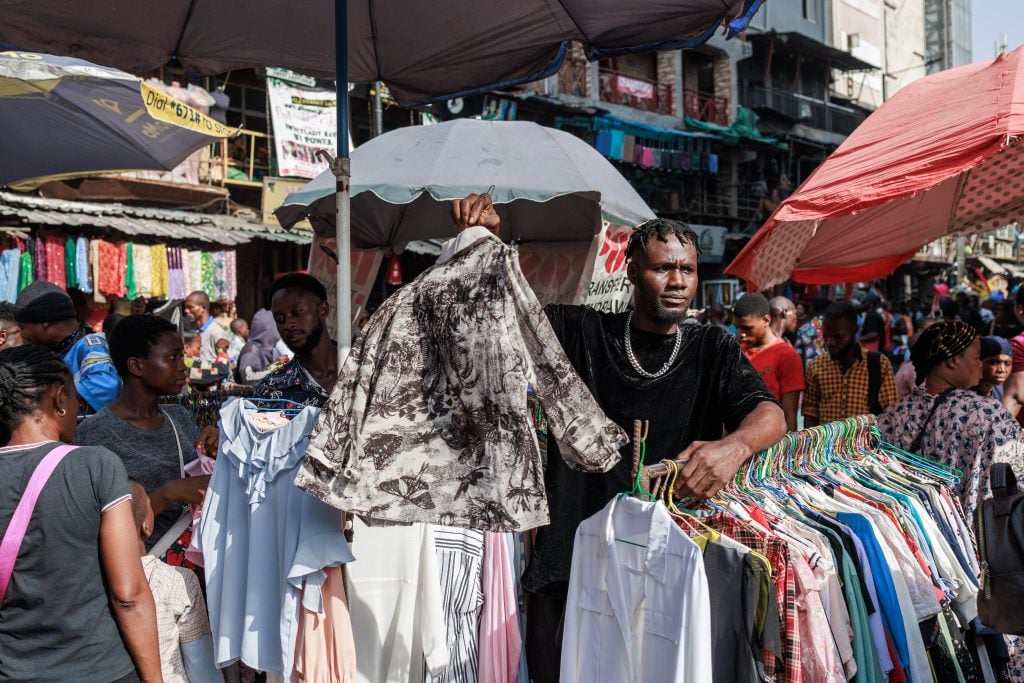
A new freight transport ship, MV Mpungu, was launched from Entebbe on the shores of Lake Victoria on Wednesday ahead of its maiden voyage in April. The ‘roll-on/roll-off’ vessel – which accommodates trucks driven on at the departing port, then off at their destination – is intended to strengthen trade links between Uganda and neighbouring Tanzania.
The Mpungu will operate scheduled freight services between Port Bell, near the Ugandan capital Kampala, and Mwanza at the southern edge of the lake in Tanzania. The journey will take just 18 hours – compared to the three or four days usually needed to transport goods by truck around the shores of the lake.
The Mpungu has a capacity for up to 1,000 tons of containerised cargo – equivalent to 21 trailers. The 96-metre-long vessel was built in Entebbe over a period of 21 months by SECO Marine, part of the Kenyan-headquartered Alpha Group. InfraCo Africa, part of the donor-funded Private Infrastructure Development Group, and pan-African logistics company Grindrod established a joint venture known as East African Marine Transport (EAMT), which commissioned the vessel. Grindrod will be responsible for operating the Mpungu.
Speaking at the launch, Xolani Mbambo, Grindrod’s CEO said: “The ferry operation aims to provide a reliable, efficient and cost-effective solution for businesses in the region, thereby promoting trade, and contributing to economic growth.”
InfraCo Africa’s regional asset management lead, Rodney Seema, told African Business that the costs of transporting goods to market can be “prohibitively high” for traders at present. “Freight transport across Lake Victoria is undertaken on an ad hoc basis and vessels sail only when they are full. This approach has economic and opportunity costs for businesses, particularly those working with time sensitive cargo.”
Seema adds that Mpungu is set to bring particular benefits for companies selling produce that is vulnerable to spoilage. “For those transporting time-sensitive fresh produce, the reliable, scheduled EAMT service will enable them to plan their shipments, saving time – and the potential spoilage of produce – and avoiding driver fatigue.”
Safety and environmental benefits
Marine transport on the Mpungu is potentially much safer than long-distance road journeys. Road accidents are the fourth-most common cause of death for men in Uganda, according to World Health Organization data, and the fifth-most common in Tanzania.
And the benefits of a professionally built and operated marine transport vessel can be illustrated by several recent disasters on poorly maintained ferries. Some 228 people are thought to have died when Tanzanian ferry MV Nyerere capsized on Lake Victoria in 2018. As many as 1,000 perished in another disaster in 1996, when the severely overcrowded MV Bukoba sank on the lake.
Increasing the use of marine transport can also bring environmental benefits. Seema says that the Mpungu has been designed to be fuel-efficient and to reduce carbon dioxide emissions through displacing road transport.
Seema believes that the Mpungu, which may serve other ports in Uganda and Tanzania in the future, as well as expanding into Kenya, could persuade other investors of the benefits of marine transport in the region.
“It is anticipated that, by demonstrating demand for a scheduled roll-on roll-off freight service, EAMT will stimulate further investment in the sector to expand available routes, opening up new markets for freight carriers across the region and shining a light on Lake Victoria’s potential as a conduit for trade,” he says.
InfraCo Africa has also invested in Kenyan company Waterbus, based in Kisumu, which is looking to expand passenger ferry services on the lake.
At the launch of the Mpungu, Ugandan minister for works Echwera Musa praised the project and predicted a bright future for marine transport in the region.
“This lake will be full of reliable vessels in the years to come,” he said.






Recent Comments